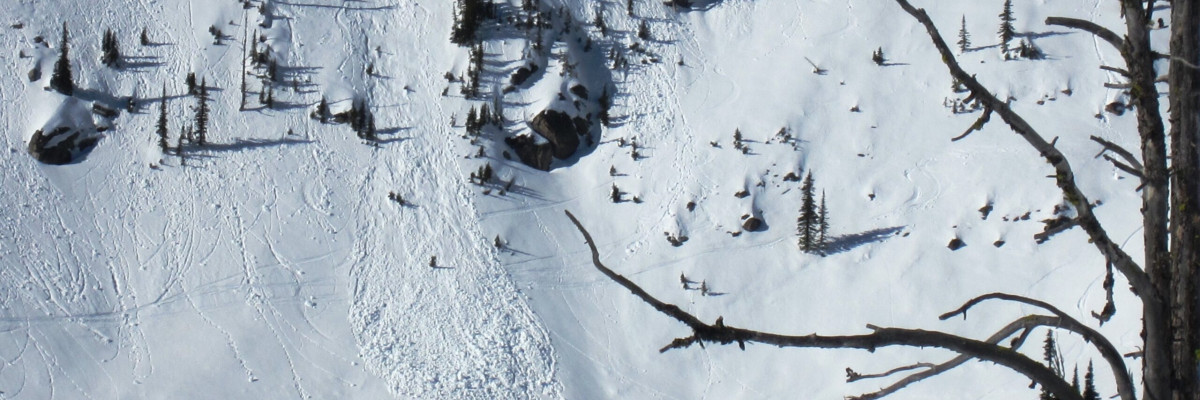The avalanche danger in the west central Montana backcountry is rated at moderate. Above 6000 feet, human triggered avalanches are possible on slopes 35 degrees and steeper. Although warm temperatures have helped settle the snowpack; stability tests show the possibility of slab avalanches and wet, loose avalanche activity will increase in the afternoon with rising temperatures. Your use of caution should rise along with those temperatures in the afternoon.
Good morning, this is Dudley Improta with the West Central Montana Avalanche Center’s advisory for January 27, 2015. This danger rating does not pertain to operating ski areas, is the sole responsibility of the U. S. Forest Service and expires at midnight tonight (1/27/15).
Weather and Snowpack Discussion
Mountain winds are out of the west at 18 to 24 mph this morning. Temperatures above 6ooo feet are generally in the upper 30’s to low 40’s F. Expect another warm, mostly sunny day with the high elevation temperatures reaching near 50 F again.
I really wanted to call low danger, I really did. My pit scores from yesterday and observations through the weekend would just not let it happen. Earlier this year Steve said we have a tricky snowpack; I put it another way Friday – things have been less than definitive. I don’t know who said this; maybe I did – “odd weather equals odd avalanche conditions”.
We had high elevation rain this weekend from Lost Trail Pass to Lolo Pass and from Hoodoo Pass to the southern Swans. It wasn’t a ton of rain and it didn’t seem to penetrate the snow very deep. Rain and melt-freeze crusts have formed on all aspects. Besides the obvious loose, wet snow movement in the heat of the day; we’re still seeing evidence of possible slab releases. Yesterday in the Rattlesnakes we had stability tests propagate on sunny ESE and shaded N slopes (see pictures and more numbers below).
Skiers in the southern Swans were not getting the propagation in their tests this weekend but were seeing weak layers about 14 inches from the surface. Observations from Elk Meadows noted collapsing before and after the rain but no avalanche activity or energetic snowpit scores (see public obs).
The weather is awesome for travelling and lots of folks are getting out. Snotel sites are showing 6 to 8 inches of settlement across the advisory area since Friday. But, we’re getting some interesting stability test scores and a couple of red flags like whumphing and collapsing noises.
If you’re choosing to recreate on slopes 35 degrees and steeper; take time to dig into the snowpack 2 or 3 feet to check for an instability. And, of course, only expose one person at a time to any avalanche hazard.
Weather and Avalanche Outlook
High pressure will continue through today. Temperatures in the high terrain will continue to be above normal. A slight disturbance could produce some precipitation this evening into Wednesday, but no significant snow is forecast for west central Montana. I would expect the avalanche danger to remain the same for the next few days.
I will issue the next regularly scheduled advisory on Friday, January 30.
Ride and ski safe.
























